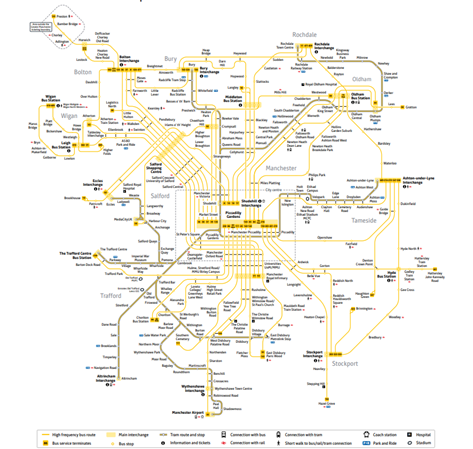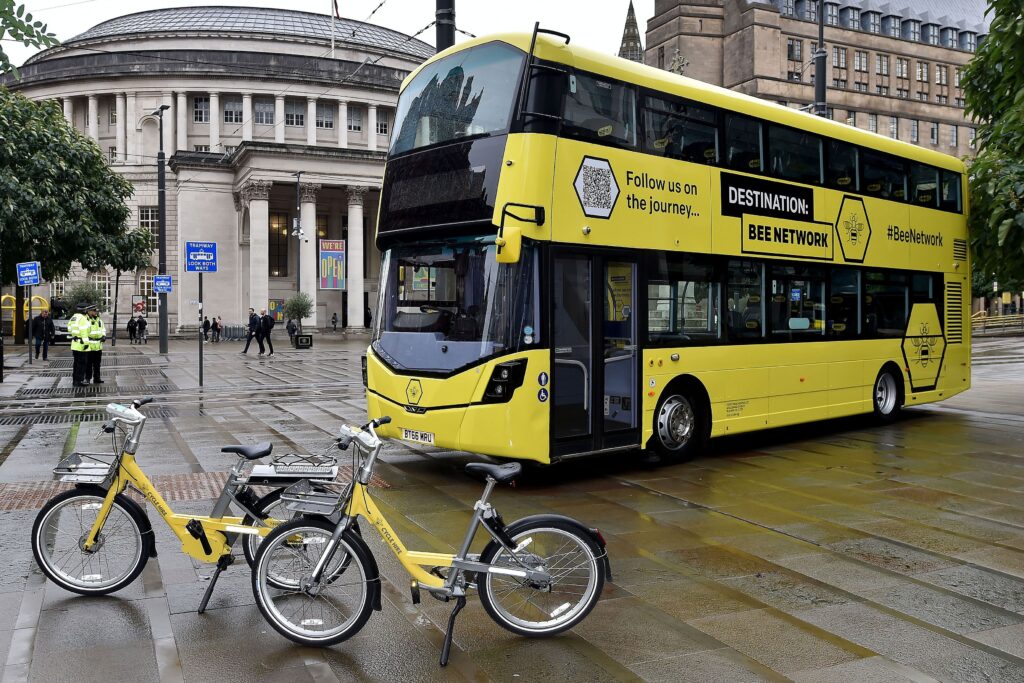Greater Manchester
Challenge
How can Greater Manchester leverage data-driven decision-making to enhance the efficiency, safety, and sustainability of its multimodal transport network?
CURRENT SITUATION
Over the past five years, Transport for Greater Manchester (TfGM) has reformed bus operations, making the Bee Network the region’s main transport system, becoming the first outside of London to do so. The Bee Network, established as the main public transport system, promotes affordable and sustainable travel for everyone.

The shift to managing operations has introduced new challenges, particularly in efficiently managing key bus routes into the city centre. These corridors are sensitive to congestion and disruption, which impacts the bus network and surrounding transport systems, causing delays, higher emissions, safety risks, and a poor passenger experience. Ensuring the reliability and safety of these routes is a top priority for TfGM and its users.
As the region’s transport network grows more complex, building more infrastructure is no longer feasible. Instead, TfGM seeks to use innovative digital tools to improve the efficiency of the public transport system by taking decisions based on data. The goal is to use technology to better understand the on-the-ground situation and take decisions based on collected data to influence travel behaviour, understanding disruptions, and implementing traffic management solutions to keep the region moving smoothly.
TfGM wants to explore the impact of policy-driven traffic management interventions, particularly through digital solutions. By collecting existing data from different sources and analysing data from various transport modes, TfGM hopes to improve the understanding and use of road network capacity, balance efficiency across transport modes, and help meet key goals such as reducing emissions and promoting sustainable travel.
To provide a multimodal status view of the network, available data sources include:
- Floating Vehicle Data
- Automatic Traffic Count (ATC) – vehicle count, flow and classification
- Bus automatic vehicle location (AVL)
- Cycle hire
- Video analytics sensing for multimodal count and classification
Below are some potential applications and use cases for the data that TfGM is interested in exploring:
- Data visualisation of all modes of transport: focused on mobility policy drivers (optimising for bus, active travel, emissions) and the impact on network performance.
- Fusion of data to provide insight and understanding on network usage and people movement.
- Insight into incident management – cause analysis and impact on Bee Network.
- Map critical routes / corridors with key assets that are essential for maintaining network efficiency – data will be used to assess network sensitivity.
This challenge seeks innovative solutions that leverage digital tools and existing datasets to produce key insights, better inform policy planning and improve the efficiency, safety, and environmental impact of Greater Manchester’s transport network.
Desired situation
By leveraging data insights across all modes of transport, TfGM will improve network efficiency and resilience, support sustainability goals, and enhance passenger satisfaction.
Key outcomes will be:
- Analysis of impact of traffic management interventions and policy driven operations.
- A real time predictive tool to assist load balance across modes
- New ideas for policy led traffic management interventions
- Visualisation of the multimodal transport network in real or near real time
Success will be measured through a number of indicators:
- Bus journey reliability
- Highway journey times
- Average customer delay






